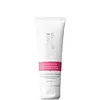What's inside
What's inside
 Key Ingredients
Key Ingredients

No key ingredients
 Benefits
Benefits

 Concerns
Concerns

 Ingredients Side-by-side
Ingredients Side-by-side

Water
Skin ConditioningRicinus Communis Seed Oil
MaskingGlycerin
HumectantPropylene Glycol
HumectantCetearyl Alcohol
EmollientEthylhexyl Dimethyl Paba
UV AbsorberOlea Europaea Fruit Oil
MaskingCetrimonium Chloride
AntimicrobialAmodimethicone
Phenoxyethanol
PreservativeGuar Hydroxypropyltrimonium Chloride
Skin ConditioningEthylhexylglycerin
Skin ConditioningHydrolyzed Elastin
EmollientTrideceth-12
EmulsifyingSodium Benzoate
MaskingCitric Acid
BufferingWater, Ricinus Communis Seed Oil, Glycerin, Propylene Glycol, Cetearyl Alcohol, Ethylhexyl Dimethyl Paba, Olea Europaea Fruit Oil, Cetrimonium Chloride, Amodimethicone, Phenoxyethanol, Guar Hydroxypropyltrimonium Chloride, Ethylhexylglycerin, Hydrolyzed Elastin, Trideceth-12, Sodium Benzoate, Citric Acid
Water
Skin ConditioningCetearyl Alcohol
EmollientCetyl Alcohol
EmollientBehentrimonium Chloride
PreservativeGlycerin
HumectantCetrimonium Chloride
AntimicrobialBehentrimonium Methosulfate
Behenyl Alcohol
EmollientDicocoyl Pentaerythrityl Distearyl Citrate
EmollientParfum
MaskingPolyglyceryl-10 Pentastearate
Skin ConditioningGlyceryl Stearate
EmollientQuaternium-87
CleansingIsopropyl Alcohol
SolventBenzyl Alcohol
PerfumingMaleic Acid
BufferingSimmondsia Chinensis Seed Oil
EmollientSodium Benzoate
MaskingStearamidopropyl Dimethylamine
EmulsifyingDisodium EDTA
Oryza Sativa Cera
Skin ConditioningThioctamidoethyl Dimethylamine Maleate
AntimicrobialSodium Hydroxide
BufferingPolyglyceryl-3 Polyricinoleate
EmulsifyingSorbitan Isostearate
EmulsifyingAlpha-Isomethyl Ionone
PerfumingLinalool
PerfumingHydrolyzed Adansonia Digitata Seed Extract
Lactic Acid
BufferingCoumarin
PerfumingRetinyl Palmitate
Skin ConditioningHelianthus Annuus Seed Oil
EmollientWater, Cetearyl Alcohol, Cetyl Alcohol, Behentrimonium Chloride, Glycerin, Cetrimonium Chloride, Behentrimonium Methosulfate, Behenyl Alcohol, Dicocoyl Pentaerythrityl Distearyl Citrate, Parfum, Polyglyceryl-10 Pentastearate, Glyceryl Stearate, Quaternium-87, Isopropyl Alcohol, Benzyl Alcohol, Maleic Acid, Simmondsia Chinensis Seed Oil, Sodium Benzoate, Stearamidopropyl Dimethylamine, Disodium EDTA, Oryza Sativa Cera, Thioctamidoethyl Dimethylamine Maleate, Sodium Hydroxide, Polyglyceryl-3 Polyricinoleate, Sorbitan Isostearate, Alpha-Isomethyl Ionone, Linalool, Hydrolyzed Adansonia Digitata Seed Extract, Lactic Acid, Coumarin, Retinyl Palmitate, Helianthus Annuus Seed Oil
Ingredients Explained
These ingredients are found in both products.
Ingredients higher up in an ingredient list are typically present in a larger amount.
Cetearyl alcohol is a mixture of two fatty alcohols: cetyl alcohol and stearyl alcohol. It is mainly used as an emulsifier. Emulsifiers help prevent the separation of oils and products. Due to its composition, it can also be used to thicken a product or help create foam.
Cetearyl alcohol is an emollient. Emollients help soothe and hydrate the skin by trapping moisture.
Studies show Cetearyl alcohol is non-toxic and non-irritating. The FDA allows products labeled "alcohol-free" to have fatty alcohols.
This ingredient is usually derived from plant oils such as palm, vegetable, or coconut oils. There is debate on whether this ingredient will cause acne.
Due to the fatty acid base, this ingredient may not be Malassezia folliculitis safe.
Learn more about Cetearyl AlcoholThis ingredient is a preservative, antimicrobial, and emulsifier. It is often used in cosmetics for its ability to cleanse, condition, and reduce static.
Cetrimonium chloride is a quaternary ammonium salt, meaning it has a water-soluble structure.
Glycerin is already naturally found in your skin. It helps moisturize and protect your skin.
A study from 2016 found glycerin to be more effective as a humectant than AHAs and hyaluronic acid.
As a humectant, it helps the skin stay hydrated by pulling moisture to your skin. The low molecular weight of glycerin allows it to pull moisture into the deeper layers of your skin.
Hydrated skin improves your skin barrier; Your skin barrier helps protect against irritants and bacteria.
Glycerin has also been found to have antimicrobial and antiviral properties. Due to these properties, glycerin is often used in wound and burn treatments.
In cosmetics, glycerin is usually derived from plants such as soybean or palm. However, it can also be sourced from animals, such as tallow or animal fat.
This ingredient is organic, colorless, odorless, and non-toxic.
Glycerin is the name for this ingredient in American English. British English uses Glycerol/Glycerine.
Learn more about GlycerinSodium Benzoate is a preservative. It's used in both cosmetic and food products to inhibit the growth of mold and bacteria. It is typically produced synthetically.
Both the US FDA and EU Health Committee have approved the use of sodium benzoate. In the US, levels of 0.1% (of the total product) are allowed.
Sodium benzoate works as a preservative by inhibiting the growth of bacteria inside of cells. It prevents the cell from fermenting a type of sugar using an enzyme called phosphofructokinase.
It is the salt of benzoic acid. Foods containing sodium benzoate include soda, salad dressings, condiments, fruit juices, wines, and snack foods.
Studies for using ascorbic acid and sodium benzoate in cosmetics are lacking, especially in skincare routines with multiple steps.
We always recommend speaking with a professional, such as a dermatologist, if you have any concerns.
Learn more about Sodium BenzoateWater. It's the most common cosmetic ingredient of all. You'll usually see it at the top of ingredient lists, meaning that it makes up the largest part of the product.
So why is it so popular? Water most often acts as a solvent - this means that it helps dissolve other ingredients into the formulation.
You'll also recognize water as that liquid we all need to stay alive. If you see this, drink a glass of water. Stay hydrated!
Learn more about Water